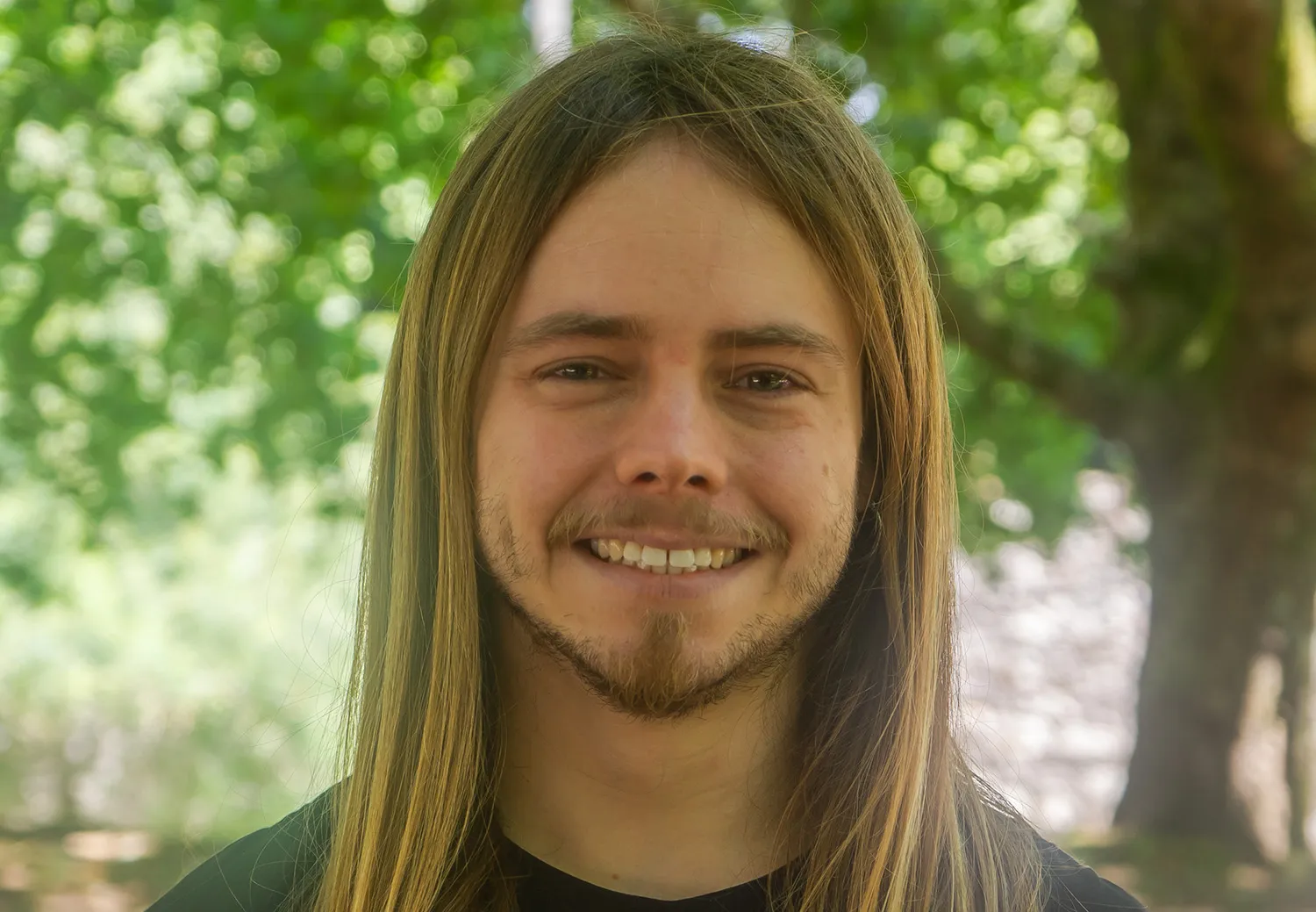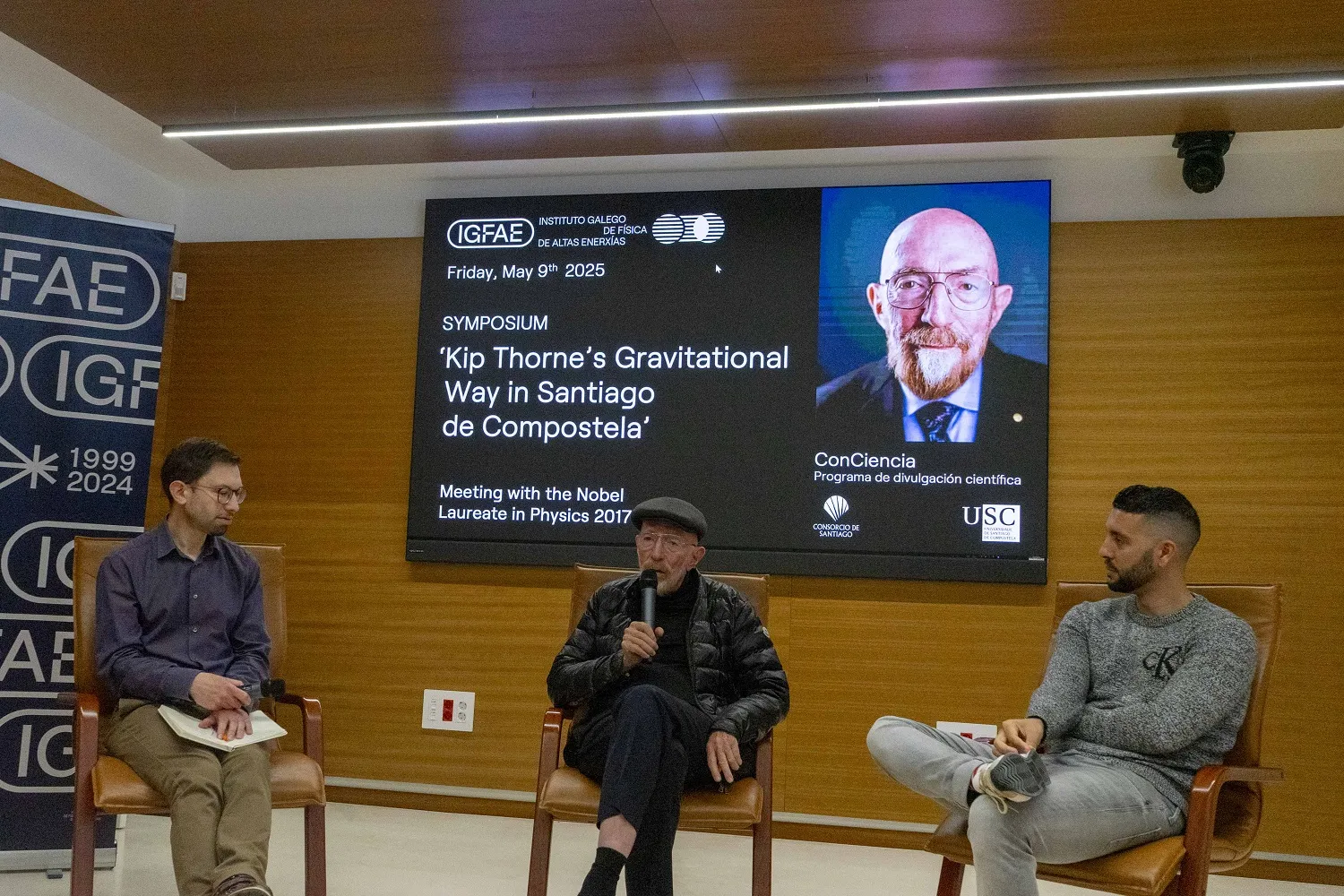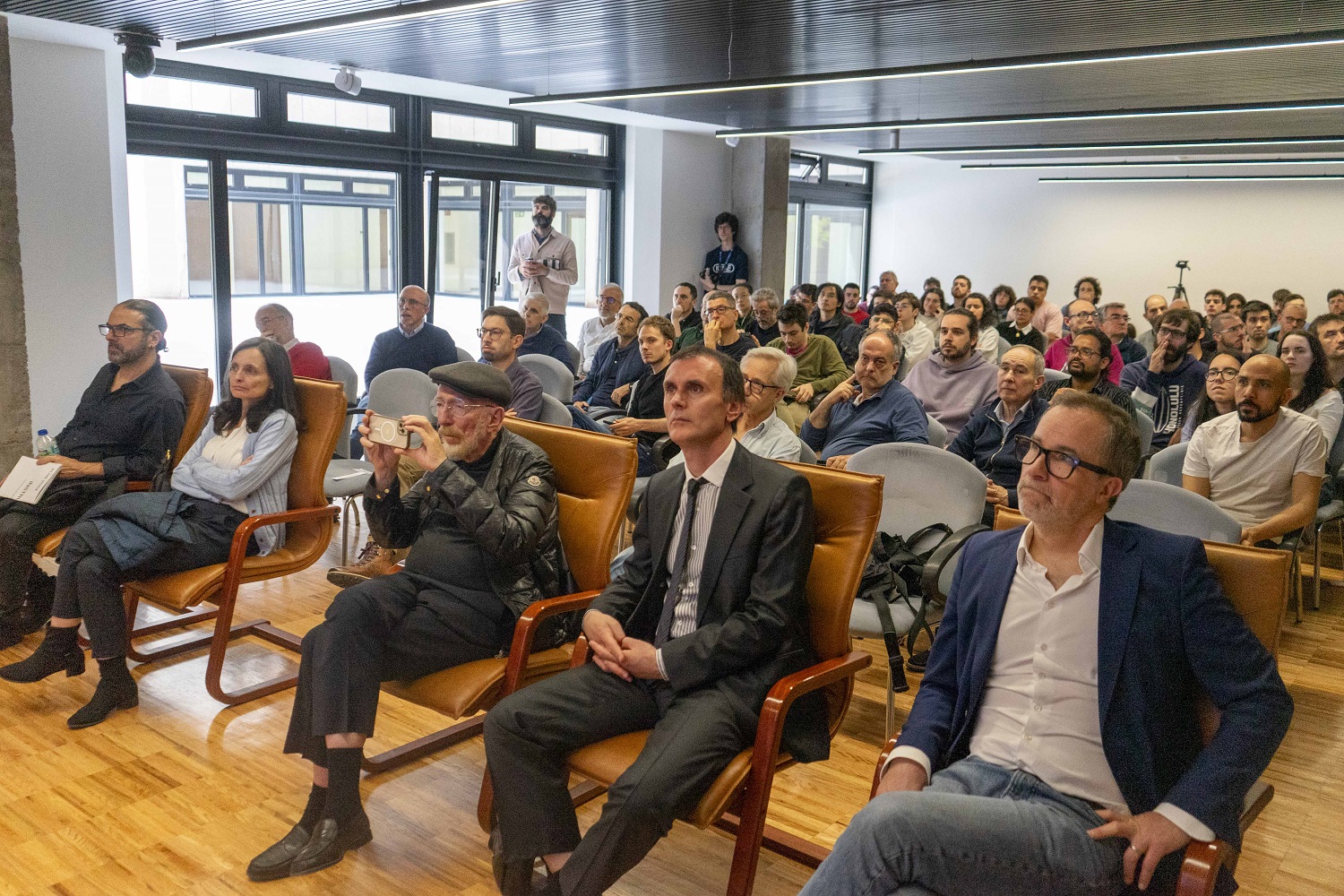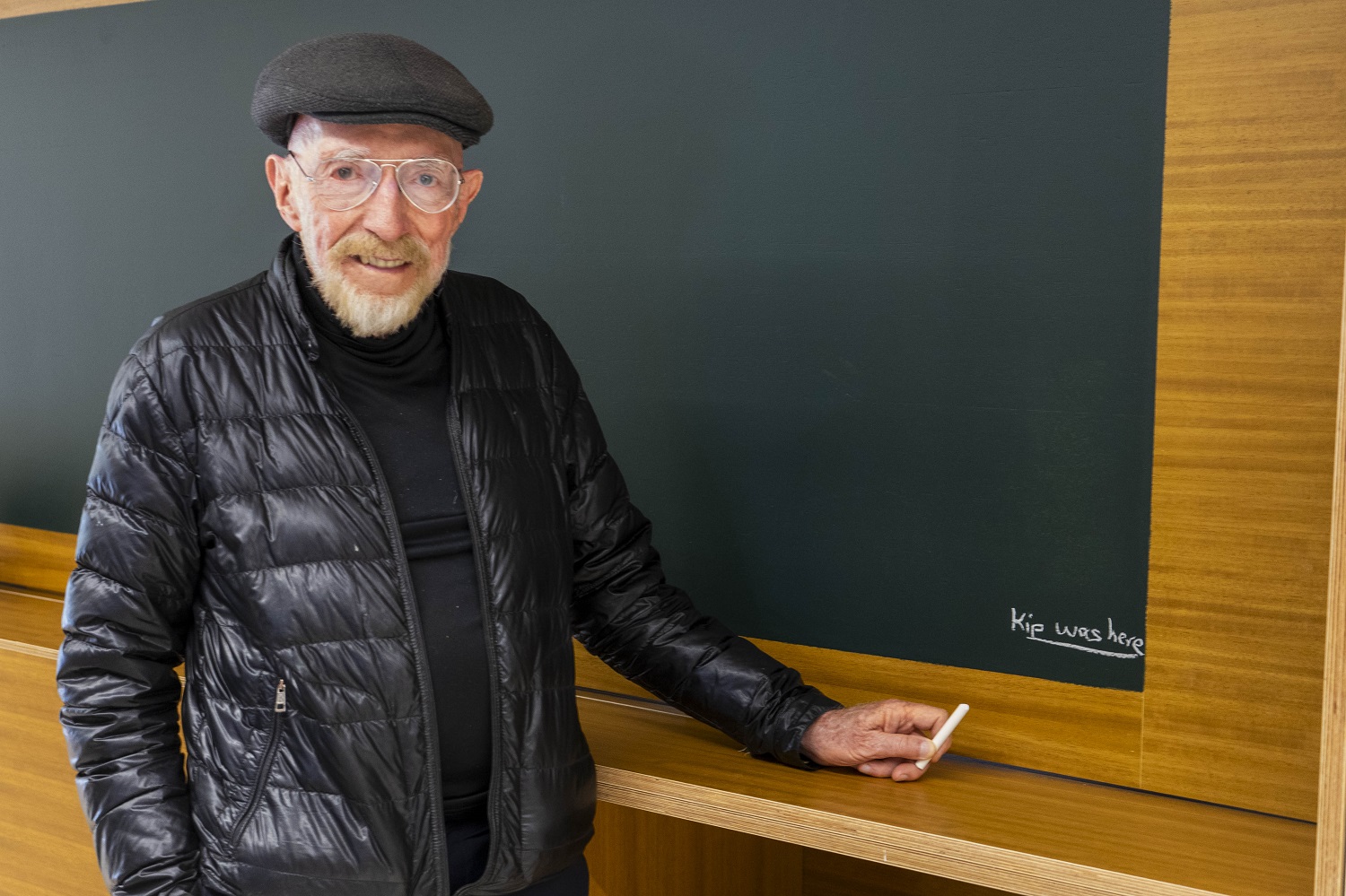Juan Lois Fuentes, IGFAE graduate, awarded as the best PhD thesis in Experimental Nuclear Physics in Spain



14.05.2025

Kip S. Thorne, Nobel Laureate in Physics 2017, visited the Instituto Galego de Física de Altas Enerxías (IGFAE), a joint center of the USC and the Xunta de Galicia. Coinciding with his presence in Santiago de Compostela as part of the Programa ConCiencia, Thorne participated in the symposium “Kip Thorne’s Gravitational Way in Santiago de Compostela,” where IGFAE staff working in astrophysics presented some of the most relevant examples of their scientific work.
After giving a master class on Gravitation at the USC Faculty of Physics, the American scientist arrived at the Institute accompanied by the director of the Programa ConCiencia and USC professor, Jorge Mira Pérez, and IGFAE researcher José Edelstein, who is serving as host for this edition of ConCiencia. He was welcomed upon arrival by the IGFAE scientific director, Carlos Salgado, and the deputy director, Abraham Gallas. Also present on the visit were the Dean of the USC Faculty of Physics, María Elena López Lago, and the vice-dean, Víctor Pardo Castro.

During the symposium, IGFAE researchers such as Jose Edelstein, Enrique Zas, and LIGO collaboration members Juan Calderón and Thomas Dent presented some of the most remarkable advances that the center’s staff has achieved in recent years. The American physicist declared himself “impressed” by the scientific quality of the work carried out at IGFAE within the framework of the LIGO and Pierre Auger collaborations. The Nobel laureate then held a discussion led by Juan Calderón and Thomas Dent, leaders of the Gravitational Wave research program at IGFAE and members of the LIGO collaboration. Kip Thorne is one of the founders of this international project, which in 2015 made possible the experimental detection of these space-time perturbations.
At the end of his visit, the physicist was presented with a gift in commemoration of his visit and left his signature on one of the Institute’s whiteboards.

After receiving accreditation as a María de Maeztu Unit of Excellence in 2017, the IGFAE’s scientific directorate identified gravitational wave science as a line of research with significant growth potential, particularly in relation to multi-messenger astrophysics. This is a branch of astrophysics that aims to exploit the detection of different types of signals (photons, gravitational waves, cosmic rays, neutrinos) to enhance and complement information from astrophysical sources.
The new research program initiated at the IGFAE has synergies with other lines of work at the Institute, particularly with its strong theoretical involvement in many aspects of gravity, the use of gravitational waves as probes of ultra-dense nuclear matter in neutron stars, as well as with experimental activities within the Pierre Auger Observatory, the largest and most precise ultra-high-energy cosmic ray detector in the world.
Currently, the LIGO team at IGFAE has four members (Thomas Dent, Juan Calderón, Praveen Kumar, and Ana Lorenzo) and already has a doctoral thesis developed within the LIGO framework, which Verónica Villa presented in 2024.
In the coming years, thanks to the laboratories that will be launched in the new facilities, IGFAE aims to consolidate its gravitational wave detection program, also beginning the development of experimental instrumentation for this discipline.
Kip Stephen Thorne was born in Logan, Utah (United States), in 1940. He got his bachelor degree in Physics at the California Institute of Technology (Caltech) and earned his doctorate at Princeton in 1965 under the supervision of John Archibald Wheeler, the pioneer of General Relativity after the death of Albert Einstein. After completing his thesis, he returned to Caltech, where he spent most of his academic career.
In the 1970s, Thorne was one of the driving forces behind the LIGO project. After decades of work, involving hundreds of people from around the world, two gigantic detectors separated by more than 3,000 km (in the states of Louisiana and Washington) were built with perpendicular arms several kilometers long. Using laser technology, these arms measure the tiny deformations in space-time (smaller than a proton) caused by the violent mergers of black holes hundreds of millions of light-years from Earth.
In September 2015, the LIGO interferometers detected gravitational waves for the first time. This milestone in physics earned Thorne, along with Barry C. Barish and Rainer Weiss, a host of accolades, most notably the Nobel Prize in Physics in 2017. The direct observation of these “wrinkles” in space-time, theoretically predicted by Albert Einstein in 1915, is one of the great milestones in physics in recent decades.
In addition to his valuable scientific work, Thorne stands out for his prolific outreach activities. He collaborated with Carl Sagan on his novel Contact (1985). He is the author of Black Holes & Time Warps: Einstein’s Outrageous Legacy, published in 1994. He subsequently played a key role in Christopher Nolan’s film Interstellar (2014), for which he served as a scientific advisor and executive producer. She would later publish the book The Science of Interstellar. In recent years, she served as a consultant again for Nolan and actor Cilian Murphy (who played Robert Oppenheimer in the biopic, due out in 2023). Thorne also starred in an episode of The Big Bang Theory.
The Instituto Galego de Física de Altas Enerxías (IGFAE) is a research center established in 1999 by the University of Santiago de Compostela and the Xunta de Galicia. Its mission is to coordinate and promote scientific and technical research in High Energy, Particle, and Nuclear Physics, as well as in related fields such as Astrophysics, Medical Physics, and Instrumentation. The institute hosts around 140 members involved in major experimental facilities such as CERN, the Pierre Auger Observatory, LIGO, and GSI/FAIR, among others.
The IGFAE has been accredited as a María de Maeztu Unit of Excellence by the Spanish Government’s State Research Agency. It is also part of the CIGUS network of the Regional Government of Galicia, which accredits the quality and impact of its research. The center is co-financed by the European Union through the Galicia Feder 2021-2027 Program.